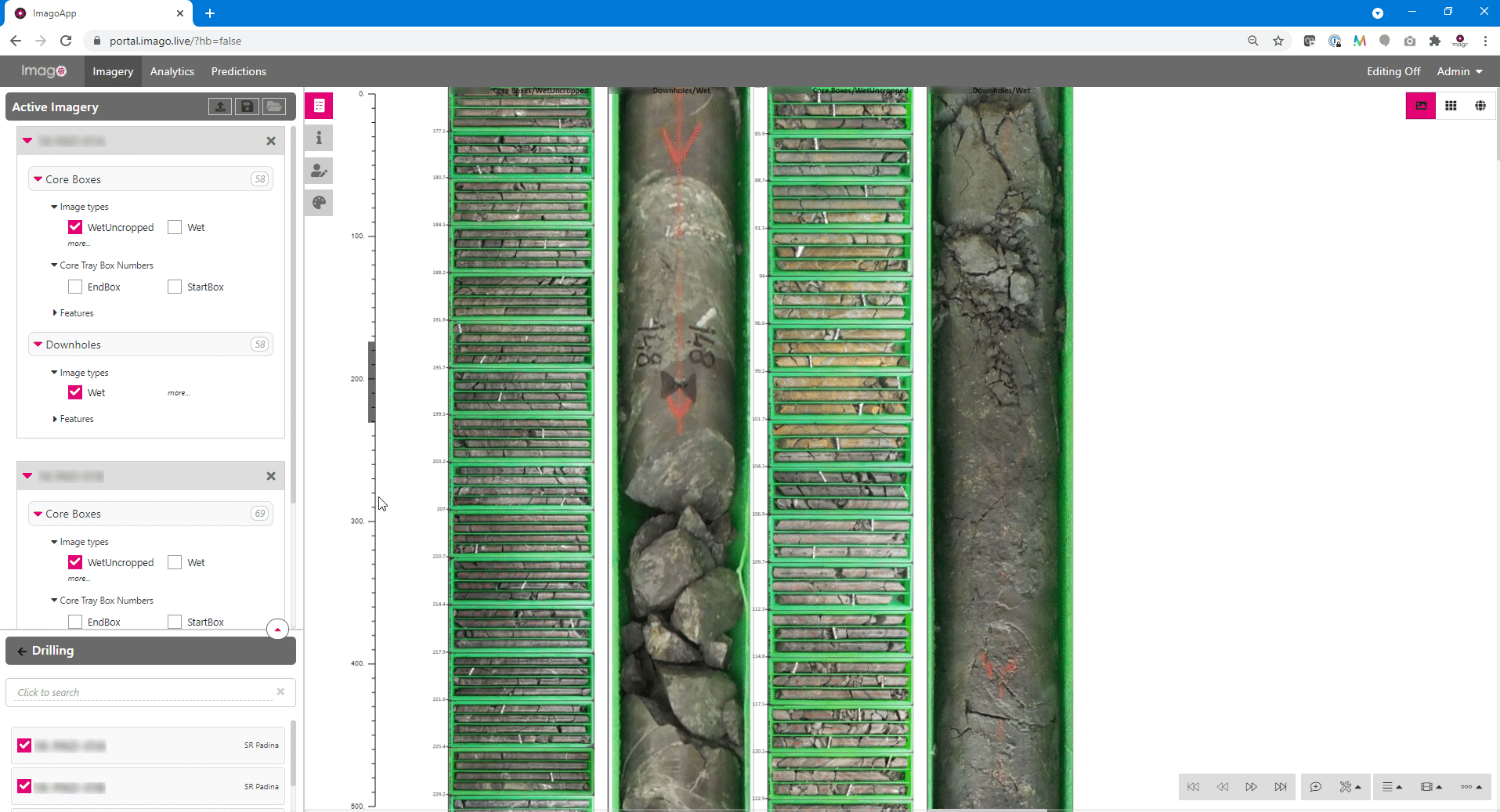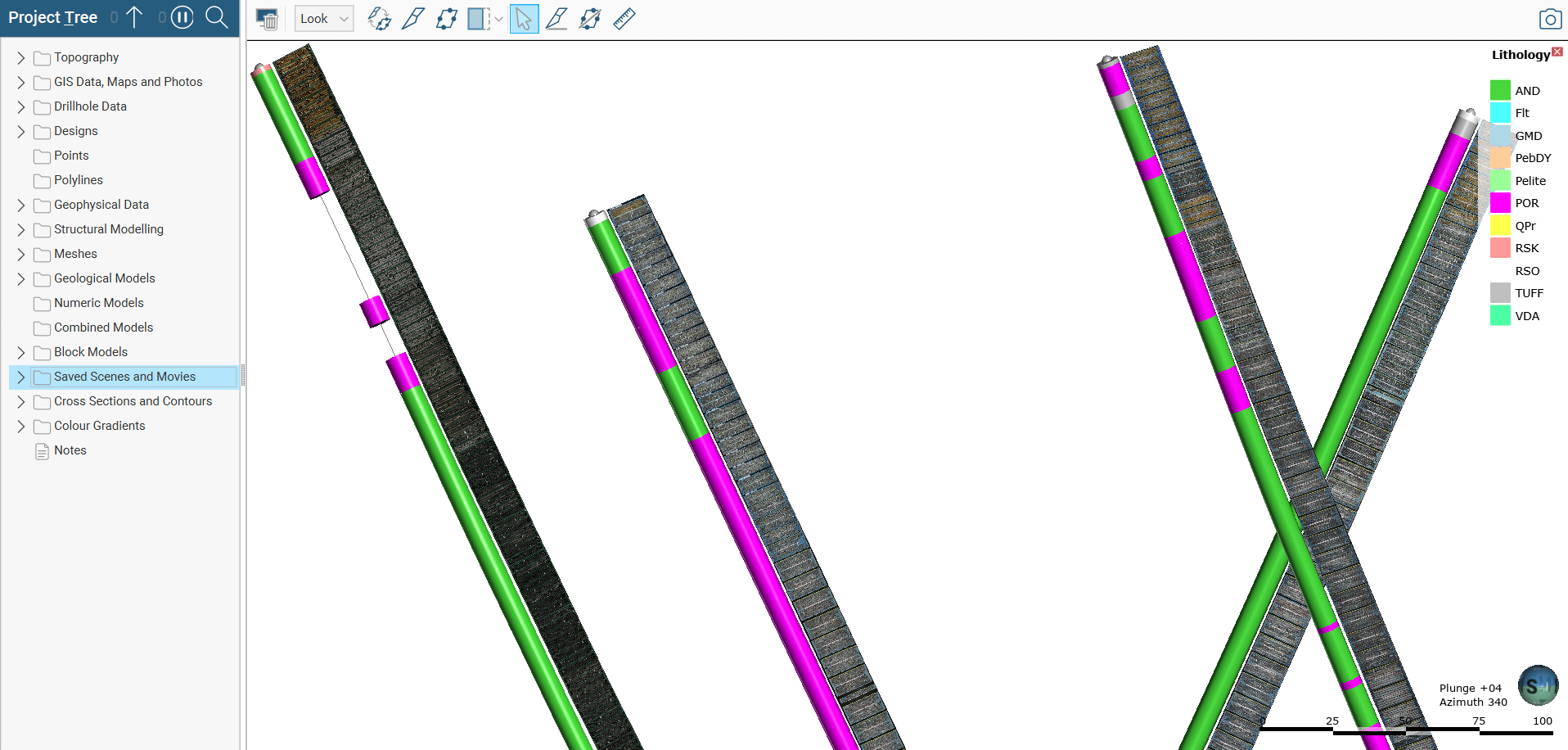Mundoro Capital Inc. (Mundoro) is a Canadian listed royalty generator and exploration company with a portfolio of projects focused on copper and gold. For its generative process the company typically outlines geochemical, geophysical and structural targets that appear promising and then forges partnerships, often with blue chip miners. Mundoro uses Seequent’s solutions and more recently the Imago core caption solution to incorporate geoscientific images as soon as they are available to improve the real time decision process in active drill programmes as well as convey further lithological data during the due diligence process in marketing its projects for earn-in.
The Project
Mundoro’s portfolio in the western portion of the Tethyan Belt is primarily concentrated around the Timok Magmatic complex in eastern Serbia, along the Upper Cretaceous portion of the belt.
Mundoro’s CEO, Teo Dechev explaines, “Mundoro has always strived to implement, where applicable, new technology available to the mineral exploration process. Technology can be in the form of new hardware systems, software systems and algorithms for better interpretation. Too often in our industry, data is captured, stored and then rarely revisited due to various hurdles with the nature of how the data is stored. With Imago we saw a tangible opportunity to not only improve the core-image data capture process but also readily improve the usability of that data in real time to support our exploration team in interpretation for modelling and targeting.”
Mundoro is a Leapfrog Geo and Seequent Central user and has recently started using Imago, a cloud-based platform to easily access data, collaborate and validate using high-quality geoscientific images. Imago integrates with Seequent’s ecosystem and connects seamlessly with Leapfrog.
Mundoro’s Senior Data Manager, Damyan Hristov says,
“Using Imago, we can generate a mesh file textured with the drillcore photos that can be imported directly into Leapfrog and displayed in 3D right along the drillhole trace. We can now access these Imago images in Leapfrog and Central, we don’t need to leave the software to benefit from the capability.”
Dechev adds, “It is essential during and after a drill campaign that we can readily share drill core image based information for discussion with our earn-in partners, particularly if partners cannot visit while drilling is ongoing and time sensitive decisions are required.”
Situation
Prior to Imago, Mundoro’s image management workflow used conventional cloud storage, but it was yet another location to access and view. Damyan says, “We had to scroll through a list of files, find the files with the intervals we were interested in and then review them in sequence, as separate images. And, of course, we weren’t able to view it directly in context with adjacent drillholes as that meant another return to the cloud, to review the core photos for the other drillhole(s), in isolation.”
This manual intervention could be exacerbated further when needing to look at old data. Archived core photos might not be immediately accessible and getting hold of the original core usually takes a significant amount of manual handling in the core shed, for instance, having workers take down core boxes using a forklift.
Once uploaded to the Imago Portal users can find and locate high-quality images of the core from each drillhole in a very short time and easily work with them. This aligns with the main purpose of Imago as it was founded to help mining companies manage the high volume and size of geological images and unlock their value.
Response
Imago was introduced to Mundoro’s core facility in Bor, Serbia, where they have a dedicated drill core photography station in a controlled light environment. Using Imago, it enables the immediate capture and cataloguing of core photos in sequence that can then be accessed on the Imago Portal by various users and collaborators via a web browser. The most important benefit though is the semi-automatic core-box photos cropping and linearisation at capture time.

Imago establishes a consistent process for capturing high quality core box images providing rich information that supports interpretation and modelling workflows. Drillcore can be viewed as both boxed and linearalised allowing site based and remote based staff to jointly participate in core logging and decision making.
Damyan explains, “As soon as you shoot your core it is lineralised and uploaded to the Imago Portal and then through the Imago link in Leapfrog in just one click you can display core photos along the drillcore trace against lithology, alteration, assay data, etc., in general all the usual data that you display downhole. With the Imago link in Leapfrog enabled, in a click on a drillhole interval of interest, you can have the core box photos for this interval right in front of your eyes. And importantly you have arrived there from Leapfrog, so you haven’t left the software you are working in to review core photos separately.”
Drillcore is linear in nature and when in core boxes it becomes quite fragmented. It has always been a challenge in the industry to restore the core as a linear feature and put it along the hole trace to help improve understanding and decision making.
Damyan explains, “In the early days you would have to go into a raster image editor, start extracting the linear core in lines from the core boxes and then put these together one after the other, rotating them 90 degrees and finally referencing them with the from and to depths just to display them on the graphical log of the drillhole. If we were interested in a particular interval, it was pretty easy for this to take a whole day.”
The Imago integration is also adding more context to daily reporting, a routine that becomes central during drilling campaigns. In the case of Mundoro this communication sometimes includes more than ten stakeholders, all in different regions – the Vancouver head office, technical and operations from Serbia and Bulgaria, and international earn-in partners. Since the pandemic Mundoro has seen an amplification of remote technical calls and it becomes increasingly essential.
In fact, the need to effectively share information with partners was one of the key reasons why Mundoro implemented Seequent Central in May 2020. Damyan says, “We were looking for an environment to be able to show our existing and potential partners true 3D datasets that they could actually play with in 3D space.
Central was the only solution that ticked all the boxes, allowing us to directly publish an entire Leapfrog project and provide the different access permissions to showcase our project data to third parties.”

Imago’s platform seamlessly integrates with Leapfrog Geo. 3D meshes with depth referenced drillcore photo textures can be exported and opened inside Geo, together with downhole logging data – critical when making high value drilling and mining decisions.
Outcome
Mundoro is drilling throughout 2021 and will gradually start to benefit from the Leapfrog and Imago integration, enabling them to address the long-term industry problem of better visualisation of lineralised core to improve analysis and decision making.
Damyan says, “It is bringing our photos into an integrated workflow with the main software programs that we use, Leapfrog and Central.
We’ve significantly enhanced access, we don’t need to browse through files to find and display the interval of interest, we can be led straight to them from Leapfrog or we can review drillcore photos directly in the Imago Portal. The most significant addition though is the capability of showing downhole renditions with core box photos or linearalised core directly in the Leapfrog and Central environment.
It means we have more confidence and can readily share this information with earn-in partners, improving our collaboration and reducing risk.”
As Seequent’s Segment Director Exploration and Resource Management, Rob Ferguson says, “We want to free the geologist to be able to think geology first and software second, this is the ethos behind everything we do. Image data is increasingly important due to the introduction of sensor technologies and this trend will continue as sensors decrease in price. We are known for ease of use and openness towards data and the Imago link means that geologists will have the most holistic view of their data possible.”
We hope to create another case study in the coming months to demonstrate first-hand the benefits Mundoro experience using Leapfrog and Imago during their forthcoming drilling programme.




